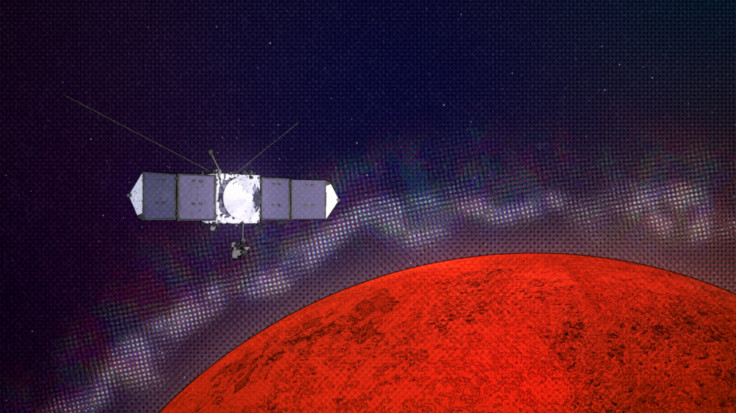NASA’s Mars Discovery Helps Explain Disruptive Phenomenon On Earth

KEY POINTS
- NASA's MAVEN spacecraft made a surprising discovery on Mars
- Plasma in the ionosphere can cause disruptions in radio communication
- Studying Earth's ionosphere can be challenging
One of NASA’s current missions on Mars made an unexpected discovery that could explain a disruptive phenomenon that regularly occurs on Earth. This phenomenon, which interferes with radio communications, can’t be fully studied on Earth due to its location.
The Mars Atmosphere and Volatile Evolution (MAVEN) is a spacecraft launched by NASA in 2013 to observe the Red Planet’s atmosphere. Since then, the spacecraft has been orbiting Mars.
Recently, MAVEN stumbled across rifts and layers in Mars’ ionosphere, the upper part of the planet’s atmosphere that is electrically charged. According to NASA, these features are also present in Earth’s ionosphere. These layers exist in the form of electrically charged gas known as plasma.
The plasma can act as giant mirrors in the sky, causing radio signals to bounce off and cause transmission disruptions. These layers of plasma are the primary reasons why radio stations often get jammed and suddenly get replaced by a different station. It can also disrupt the radio communications of aircraft and ships.
The layers are so close above all our heads at Earth, and can be detected by anyone with a radio, but they are still quite mysterious,” Glyn Collinson of NASA explained in a statement. “Who would have thought one of the best ways to understand them is to launch a satellite 300 million miles to Mars.
On Earth, studying plasma in the atmosphere is challenging because it exists in a region where the air is too thin to reach by aircraft. It also can’t be reached by satellites. Currently, the only way to study them is by using rockets. Unfortunately, these can only last for about ten minutes in the ionosphere before falling back to Earth.
Mars, on the other hand, has a different atmospheric condition. Coupled with MAVEN’s ability to orbit at lower altitudes, this allowed NASA with a unique opportunity to study the disruptive phenomenon on a different planet. Recent observations by the spacecraft revealed spikes in the level of layers or plasma in the ionosphere.
Joe Grebowsky, the former project scientist for MAVEN, said that the spacecraft’s discovery would provide more detailed information regarding the nature of the plasma layers on both Mars and Earth.
“The low altitudes observable by MAVEN will fill in a great gap in our understanding of this region on both Mars and Earth, with really significant discoveries to be had,” he stated.
© Copyright IBTimes 2024. All rights reserved.





















